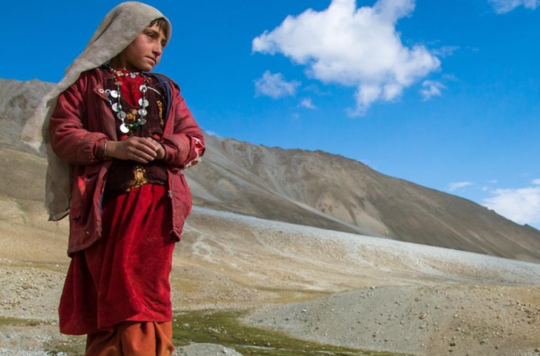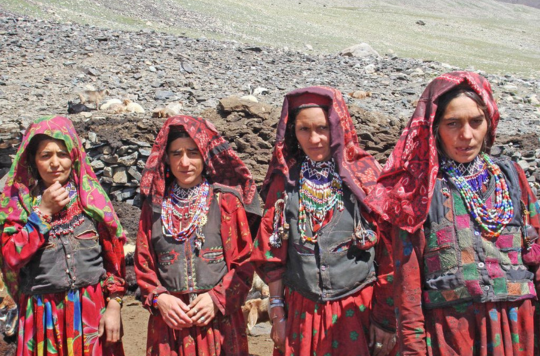

Traditional Clothing / Costumes
Clothing in the Wakhan Corridor is practical and suited for cold mountain weather.
Wakhi People:
Women typically wear:
- Long colorful dresses
- Embroidered scarves
- Woolen shawls
- Beaded jewelry
- Woolen coats
- Warm hats
- Leather boots
- Simple trousers for daily work
Women wear:
- Bright dresses
- Fur-lined coats
- Tall traditional hats
- Thick coats
- Felt hats
- Heavy boots
Their clothing reflects a blend of Central Asian and mountain traditions.
Culture & Traditions
The cultures of the Wakhi and Kyrgyz communities revolve around nature, mountains, and community life.
Their traditions include:
- Traditional flute and drum music
- Folk dances
- Oral storytelling and legends
- Strong community cooperation
- Respect for elders
- Hospitality toward travelers
Traditions
The people of Wakhan follow centuries-old customs connected to seasons and livestock.
Important traditions include:
- Summer migration to high pastures
- Animal-related rituals
- Community gatherings
- Traditional festivals marking harvest and seasonal change
Cultivation / Farming
Despite its cold climate, farming exists in lower Wakhan valleys.
Terraced farming is practiced near riverbanks.
Major crops:
- Barley
- Wheat
- Potatoes
- Beans
- Apricots
- Small vegetables in summer
Animal Rearing (Livestock)
Livestock is the heart of Wakhan’s economy and lifestyle.
Common animals:
- Yaks
- Sheep
- Goats
- Cows
- Horses
- How they are raised:
Families move with their herds (especially Kyrgyz)
Milk is used to make butter, yogurt, and dried cheese
Yaks are used for transport, milk, wool, and warmth
Livestock supports food, trade, and nomadic traditions.
Why Visit the Wakhan Corridor?
Travelers visit Wakhan for its untouched natural beauty and ancient mountain cultures.
Reasons to visit:
- Mountain scenery
- Glaciers, rivers, and remote valleys
- Unique Wakhi and Kyrgyz cultures
- Traditional yurts and village life
- Rare wildlife (snow leopards, ibex, Marco Polo sheep)
- A peaceful, off-the-grid adventure
Conclusion
The Wakhan Corridor is one of the most remote and captivating regions of Central Asia. From its ancient Silk Route history and rich mountain cultures to its breathtaking landscapes and warm-hearted people, everything about Wakhan feels untouched and timeless. Whether you love nature, adventure, or culture, the Wakhan Corridor offers a rare experience far from the modern world.
About Spantik Tours
We are a team of nature passionate people, with different areas of expertise. Our strengths are: experience , quality services, professionalism and passion for travelling. Our travel agency: Spantik Tours Pakistan (License no: 8742 ),was made with the purpose to show the real Pakistan, its real values , its amazing natural beauty and diverse culture. Our tourists can discover Pakistan and be their own Pathfinder. Our goal is to provide access to different cultures, valleys, and landscapes , by offering comfortable, safe and easy travelling. We turn places into experiences.
Contact Us
![]() Headquarter (Main Office):
Headquarter (Main Office):
Street No: 1, House No: 136, Area: Chamra Mandi, Road: Faisalabad Rd, City: Jaranwala,
District: Faisalabad, Province: Punjab, Postal Code: 37250, Country: Pakistan
![]() Rental & Services Office (Bikers):
Rental & Services Office (Bikers):
Street No : 411, Area: Shigri Kalan, Town: Gamba, Road: S1 Airport Rd, City: Skardu, Province: Gilgit Baltistan, Postal Code: 16100, Country: Pakistan